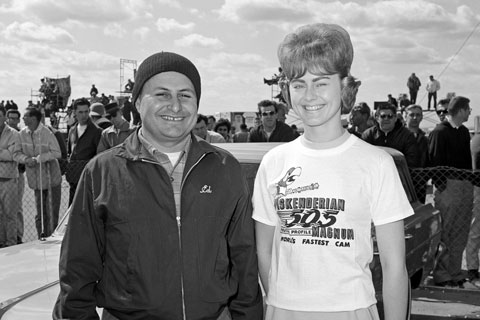SEMA News - October 2010
By Drew Hardin
Photo Courtesy Source Interlink Media Archives
 |
|
Edelbrock’s earliest designs were intended to squeeze more power out of that roadster’s Flathead V8. By 1958, the company’s inventory stretched far beyond the venerable Flathead, but because of its long-standing experience with Ford performance, “it was only natural for them to take an immediate interest in the new Ford engine,” wrote Technical Editor Ray Brock in Hot Rod magazine’s August 1958 issue.
That “new Ford engine” was the FE series V8—so named for its Ford/Edsel applications. When the article was written, Edelbrock had already bought an Edsel Pacer and was developing a triple-carburetor manifold for it.
Brock was dismayed to learn that dynamometer tests of the new FE powerplant indicated “actual horsepower for these engines is only about two-thirds of the advertised rating. Two-thirds of a 300hp rating is 200 hp, and this amount will move a two-ton automobile around quite nicely, but the fact remains that a hundred horses have strayed and a lot of owners might like to know where they are hiding—or if they were even corraled in the first place.”
Brock figured—rightly so—that Edelbrock could not only find those missing horses but create some fresh ponies, too. Over the course of eight weeks and two lengthy articles, Edelbrock tested some 30 different engine combinations, taking a stock 361-inch Edsel motor from 211 peak hp to 342. Edelbrock and his team reworked the ignition, swapped in several different camshafts, added bigger valves and multiple carburetors, mounted headers and even bored and stroked the block up to 412 inches.
“The Ford automobile is no longer a lightweight piece of machinery,” Brock wrote in his conclusion, “but we guarantee that the car will jump if some of the information discovered in this story is properly applied.”






